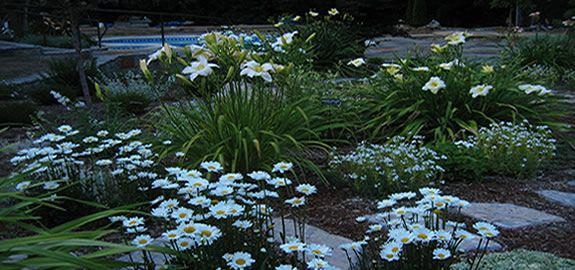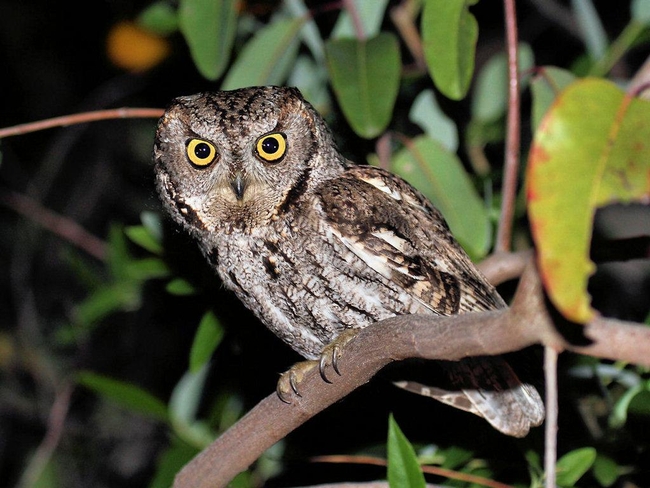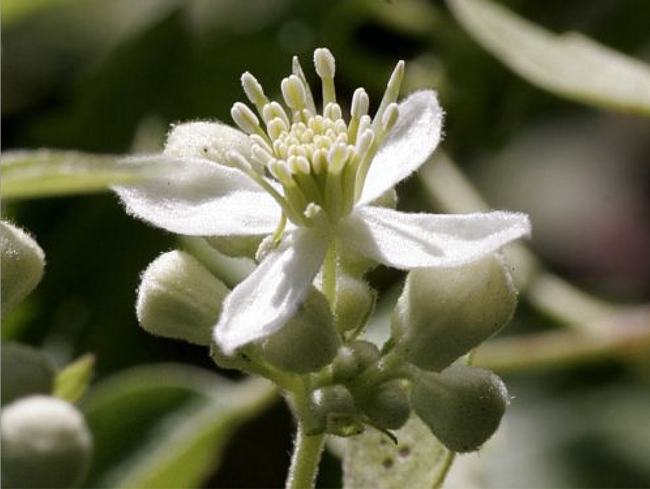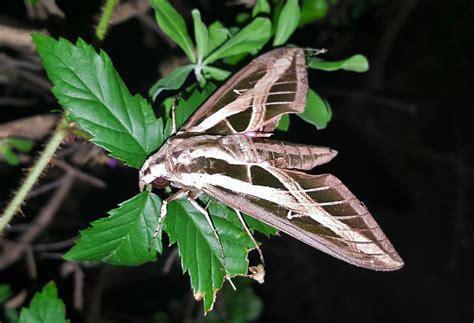When do you most love to be in your garden? A spring or summer morning comes to mind, or maybe a fall afternoon. Most gardeners spend plenty of time in the garden during the day; by observing as they tend to the plants, they are well aware of soil conditions, sunlight patterns, and microclimates, as well as the various creatures that inhabit the space. But what is going on in your garden at night? Maybe it's a bit of a mystery. Investigating that can add another dimension to your gardening.
What nocturnal animals may visit your garden at night? Raccoons, opossums, bats, owls, toads, and frogs are common, and there is a whole range of insects not commonly seen during the day, including nocturnal beetles and moths (more about moths below). Gardens sound different at night too. Insects you might hear include crickets, katydids, and grasshoppers. With fewer predators about at night, it makes sense that many insects are active then. A spring night would be an ideal time to spend some time enjoying your garden, becoming attuned to the sights, sounds, and scents that you won't encounter during the day. Ifmosquitos make you hesitant to venture outside at night, remember that eliminating standing water in your yard, wearing long sleeves, and using mosquito repellent will help control them. The Centers for Disease Control and Prevention (CDC) recommends repellents containingDEET orPicaridin.
Moon Gardens
One way to increase enjoyment of your garden is to include plants that reflect moonlight. Before air conditioning, moon gardens were popular for outdoor parties, and they can be just as delightful today. Planning a garden for nighttime use isn't difficult. Any white or pale-colored flower will glow at night, helping to create a romantic, magical setting, and some have the added bonus of a scent that's stronger at night. The Carolee Shields White Flower Garden at the UC Davis Arboretum includes summer daphne (Daphne x transcaucasica), southern magnolia (Magnolia grandiflora), Argentine rain lily (Zephyranthes candida), and calla lily (Zantedeschia aethiopica). Another popular night-blooming plant is garden phlox (Phlox paniculata 'David'). Plants native to San Joaquin County with white or pale flowers are virgin's bower (Clematis ligusticifolia), dune primrose (Oenothera deltoides), yerba mansa (Anemopsis californica), and tricolor gilia (Gilia tricolor); they support several species of moths and other insects. The lovely white Douglas iris (Iris douglasiana ‘White') is a California native local to coastal regions, but it can be grown in moist, shady areas inland.
Nighttime pollinators
How important are moths as pollinators? While some flowers close at night (this is called floral nyctinasty), most do not, and nighttime pollinators take over for the day shift. Moths, bats, beetles, and even some bees are in this nocturnal group. A study by University College London found that moths are better at pollinating than previously thought; their hairy underbellies are very good at collecting pollen. Adding to their value, moths tend to migrate, and they can carry pollen up to 1,000 miles, increasing the genetic diversity of the plants they visit.
Some plants that have co-evolved with moths have characteristics that make them more attractive to nocturnal moths. Their white or pale flowers make them more visible at night and their scent may be stronger at that time. Until recently, researchers have focused primarily on daytime pollinators, sonighttime pollinators are an area that needs further study. The recent awareness of protecting daytime pollinators from pesticides is important, but it can have unintended results. For instance, some farmers spray pesticides at night to prevent bees from coming into direct contact with them, unfortunately not realizing the harm they are causing to moths, an often-disregarded group of pollinator heroes.
Light Pollution
In addition to the threats that all pollinators face—habitat loss, pesticide exposure, disease, and invasive species—moths and other nighttime insects are affected by light pollution. The disorientation caused by artificial lights can cause moths difficulty in finding mates and evading predators, with studies showing that moth mating and plant visitation is markedly decreased in areas with artificial lights.
As gardeners, we can help nocturnal pollinators by:
- Removing lights that serve only a cosmetic purpose
- Using motion-sensing lights that remain off unless someone is nearby
- Using shielding around outdoor lights that prevents light from escaping upward, and directing light to pathways rather than at plants or trees
- Closing curtains at night so indoor lighting doesn't spill outside
It's just a matter of becoming more aware of the light in our yards at night and considering ways to minimize or eliminate it.
We can all enjoy lesser-known, wonderful aspects of our gardens by spending time there at night, learning which insects and animals inhabit the space and which flowers are attracting pollinators. A spring evening is a good time to do this.
Resources:
CalScape (California Native Plant Society)
https://calscape.org
Firefly-Friendly Lighting Practices (Xerces Society)
https://www.xerces.org/sites/default/files/publications/19-055_Firefly_Friendly_Lighting_FS_web.pdf
Hit the Lights! The Impacts of Artificial Light on Ecosystems with Shannon Murphy, Pacific Horticulture Garden Futurist
https://pacifichorticulture.org/articles/hit-the-lights-the-impacts-of-artificial-light-on-ecosystems-with-garden-futurist-shannon-murphy/
Into the Night: Shedding Light on Nocturnal Pollinators (University of Arkansas)
https://aaes.uada.edu/news/night-pollinator/
Insects of the Night (Sonoma State University Center for Environmental Inquiry)
https://www.youtube.com/watch?v=rRCFgOs25S8
Mosquitos (UC IPM)
https://ipm.ucanr.edu/PMG/PESTNOTES/pn7451.html
The Night Shift: Moths as Nocturnal Pollinators (Xerces Society)
https://xerces.org/blog/the-night-shift-moths-as-nocturnal-pollinators
Why is there a moon garden in the arboretum? (UC Davis Arboretum)
https://arboretum.ucdavis.edu/sites/g/files/dgvnsk1546/files/inline-files/Moongarden.pdf



